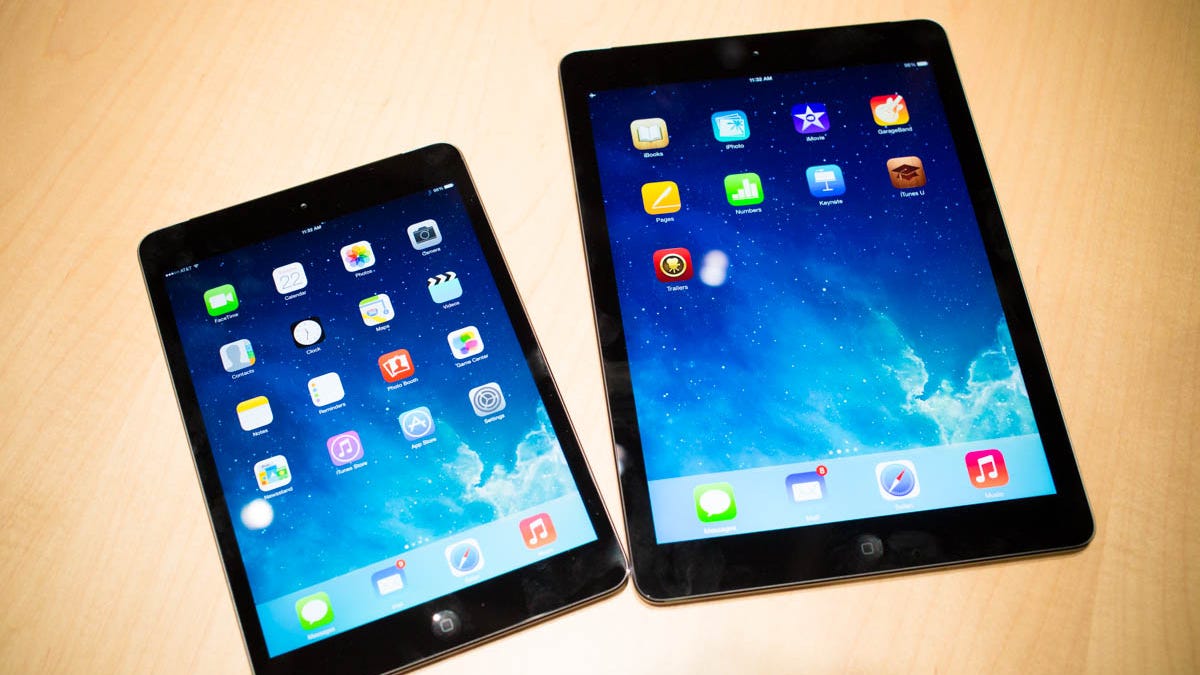Apple's new iPad pricing: A head scratcher or brilliant?
You can spend anywhere from $299 to $929 to buy an iPad this year, but things get very muddled with a mix of old and new.

The first question I got from several readers, colleagues, and friends yesterday was "so which iPad should I buy?"
Many were very smart people who keep up with the ins and outs of technology, which leads me to believe that Apple's new lineup might leave some consumers scratching their heads when faced with a potential purchase this holiday.
As with years past, the new lineup is a lot of the old and a bit of new. Last year's iPad mini is $30 cheaper and will stick around, as will 2011's iPad 2 with two 16GB models (one with only Wi-Fi, and one with 3G).
New this year are a full-sized iPad -- the iPad Air -- and iPad Mini with a Retina Display. The mini comes in two screen resolutions, both at the same 7.9-inch size. People simply pay $100 more if they want the Air with its larger screen. Everything else about the two new tablets, right down to the battery life and their innards, is the same.
This, combined with no bump to the amount of baseline storage you get (an important thing for a tablet) sets up a peculiar situation in which you can go $100 or so each way and end up with a markedly different device, often with trade-offs.
Do the math One example of a trade-off: Want Apple's cheapest tablet? Get the Wi-Fi version of last year's iPad Mini. But it's only 16GB and you can't go higher without upgrading to one of the two newer models, which at 32GB would run either $499 for the Mini, or $599 for the Air. In the case of the Air, that's the price of simply buying a second first-generation iPad Mini.
Another example: You want to get one of the newer models -- but with cellular, and you don't want to pay much. Your cheapest option is the 16GB Mini with Retina for $529. But for $70 more, you can get an Air with a larger screen and twice the storage -- however, you're back to Wi-Fi only.
There also remains the very top end of the line, which runs up to $829 and $929 respectively, for the 128GB iPad Mini and Air. The $829 option for even the latest Mini is within $70 (the price of a leather Smart Cover) of costing the same as a brand-new 11-inch MacBook Air from Best Buy.
This is not a new thing, by any means. Apple became the profits juggernaut it is by offering a "good, better, best" option with its computers and later iPods. The part that's typically made the difference has been storage, RAM, and the optical drives that consumers bought for their notebooks and desktop towers (something that's gone kaput). As Apple's business has evolved into tablets and smartphones, the parts that make the biggest difference now are storage and cellular chips, both of which can tweak the price by $100 per tier -- even when Apple's paying far, far less.
Case in point: Apple's latest, the iPhone 5S. According to a teardown by IHS iSuppli last month, that same 16GB of NAND flash memory -- which is the entry point of storage on all of Apple's tablets since 2010's iPad 1 -- runs an estimated $9.40. Bumping up to 32GB costs $18.80, while going up to 64GB costs $29 total. Those same upgrades cost users $100 for each tier on the iPads, meaning consumers pay more than 10 times what it likely cost Apple.
It's a similar story for the cellular chips that cost users an extra $100 if they want to connect to cellular networks. Those same chips only run around $25.60 for the iPad 2, iSuppli says, while the newer 4G LTE chips cost about $41.50.
What people are actually buying
This $100-per-step upgrade has gone on for years and worked out well for Apple, but perhaps it has never made such a difference as with these tablets, which are priced so close together. With notebooks, which could run between $1,000 up to $3,000, there was more wiggle room for such parts, something that makes more of a difference with gadgets that cost less.
The reality is that most people buy the mid-range version of the iPad, or at least they were early last year. A report covering three months of 2012 holiday iPad sales by Consumer Intelligence Research Partners suggested that the 32GB model of the iPad 2 accounted for 49 percent of all sales, with the 16GB model following at 31 percent. Of course, two new models and the iPad Mini have been released since then, making the comparison less than ideal.
Looking at something more recent, gadget trade-in service Gazelle says that 16GB iPads have made up 42 percent of all iPad models traded in since its program started. Last year alone that mix was a tad lower, with 16GB iPads accounting for 38 percent of trade-ins, a figure that jumped to 47 percent of trades so far this year.
Apple, to its credit, has removed some of the need for lots of storage on its devices, with things like iCloud, Photo Stream, and iTunes Match and iTunes Radio for streaming and storing music tracks. Still, there's no debating that apps, games, videos, and especially magazines can take up incredible amounts of storage quickly.
There's also little debating that while some could see potential consumer confusion in Apple's myriad iPad offerings, the results could be increased sales come this holiday shopping season.
"The new iPad Air is a very attractive upgrade," Barclays Capital's Ben Reitzes told investors on Tuesday, adding that the firm's original estimate that Apple would surpass 20 million iPads sold over the next two months was "conservative."

